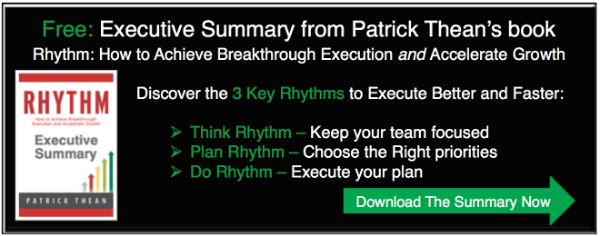Blog written by Kristi Burns, Rhythm Coach
Have you reached a point in your business where your growth, while certainly exciting, has left you feeling buried under a mountain of ever-increasing demands on your time and resources?
Are the changes required to manage your growth coming faster than you feel yourself and/or your team can adapt to?
Do you no longer feel that you or your team possesses the right skill set to manage the challenges your growth has presented?
If you answered yes to any of these questions, you have reached your “Ceiling of Complexity,” a common challenge experienced by rapid growth companies. Simply put, your life just got a lot more complicated than it used to be.
Some signs that you have hit your ceiling of complexity include:
- The inability to operationally pace and match customer demand (keep up with your growth)
- A sudden awareness of inefficiency or lack of ability to effectively solve challenges created by growth
- A realization that you have a previously unnoticed skills gap in the company
- The recognition that workflow processes are filled with bottlenecks impacting productivity
When you find yourself stuck and drowning in a sea of challenges, demands, details, and tasks that you have neither the personal bandwidth to keep up with nor the resource capacity to delegate, what do you do?
You acknowledge that to maintain your growth, you have to learn to manage it. And the best way to manage complexity is to replace it with simplicity and clarity.
Start with the basics and manage growth as a process. Do not hold an event to solve issues that took years to evolve or identify.
- Take time out to determine who you are, where you are going, and what / how you need to get there.
- Get very clear on what obstacles stand in your way - People, Strategy, Execution, or Cash.
- Establish clear priorities that allow you to simply define your path of progress every 90 days, always with an eye on your one-year and longer term goals.
- Clean your plate: Determine what is necessary now and what can wait for the next 90 days.
- Focus only on what is in front of you for those 90 days.
- Develop a set of habits such as:
- Routine planning sessions (quarterly and annual are recommended)
- Developing and monitoring of Key Performance Indicators
- Meeting routines that will promote focus, alignment, and accountability
Photo Credit: iStock by Getty Images


 LinkedIn
LinkedIn
 Facebook
Facebook
